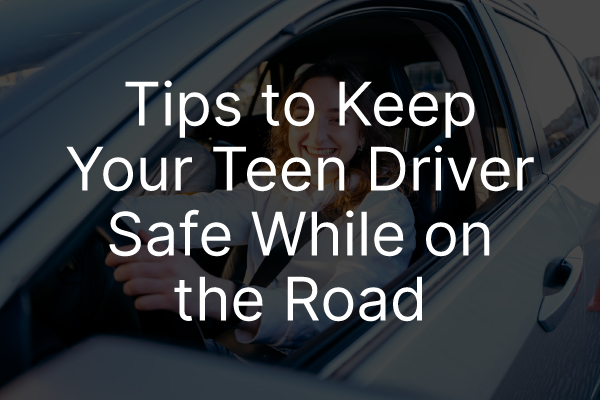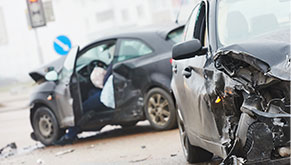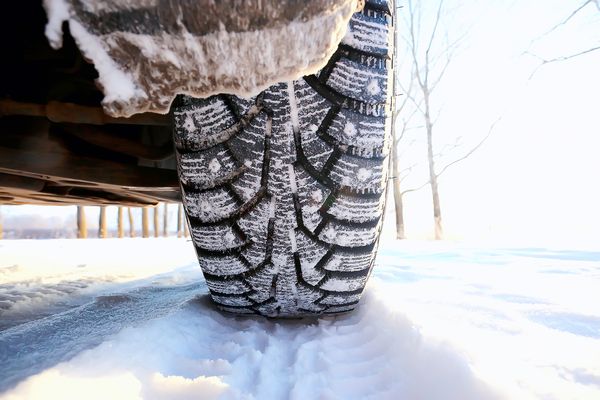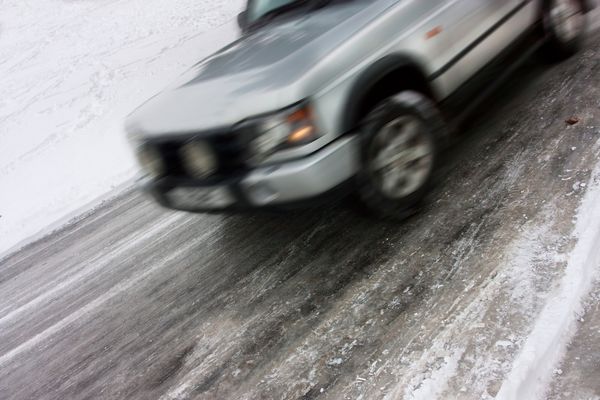
There is nothing in this world that a parent cherishes more than their children. The blessing of being able to watch that child grow up, learn about the world around them, and come into their unique personality is an incredible experience that cannot be matched. However, some aspects of growing up cause parents a lot of stress and worry. One of these is when their teenagers start learning how to drive.
Driving is a right of passage. It marks the beginning of the end of childhood and gives every individual their first taste of freedom. While driving is an exciting experience, it is also a huge responsibility and creates a heightened risk of accidents. Unfortunately, inexperience and poor decision-making behind the wheel are one of the leading causes of death for teens in the United States. 2,800 teenagers between the ages of 13-19 lost their lives in an accident. That averages out to eight teenage deaths a day.
The car accident team at the Hernandez Law Group, P.C. strongly believes that it is our job as a community to protect the most valuable members of our society. In light of this belief, our team has created this guide to go over tips that parents can use to keep their teenagers safe while they are on the road. Here is what every parent should know when their child hits this exciting time of their life:
Understanding the Hard Facts About Teenage Car Accidents
Here are a few statistics to keep the reality of teenage drivers and car accidents in perspective:
- Drivers between the ages of 16-19 are three times more likely to get into a fatal car accident than drivers who are 20 or older.
- Driver inexperience is one of the leading contributors to car accidents and injuries among teenage drivers.
- The risk of an accident is highest in the first six months after a teenage driver receives their official driver’s license.
- Nighttime driving is more dangerous for teenage drivers than driving during the daytime.
What Steps Can I Take to Ensure That My Teenage Driver Is Safe

While there is no way to eliminate the risk of an accident, there are steps that can be taken to help reduce the chances or even the severity of an accident. These steps deal with the same thing; knowledge. Ensuring that your child understands how a vehicle works, the rules of the road and that their life is more precious than getting to their destination at a certain time can give them the right tools to make smarter decisions on the road. Here are the steps you can take with your child to give them the ability to make better decisions:
Tip Number 1: Make Sure Your Child Knows The Car They Are Driving
Each car has its unique quirks or feels when being driven, and these can often catch inexperienced drivers off-guard. Before your child gets into your car to drive, make sure they know how to properly operate it.
Review the owner’s manual to understand how your vehicle functions, how to use each of the features on the instrumental panel, and what kind of safety features it has.
One of the most important aspects of driving a car is ensuring that it is properly maintained. Maintenance keeps a vehicle’s road safe and reduces the risk of major malfunctions in the vehicle’s performance. Make sure your child knows how to do the following:
- Open the hood to their car
- Check the oil levels
- Locate the toolkit and tire jack
- Check their tire pressure
- Measure the tire tread depths
- Change their tire
Hernandez Law Group, P.C. Pro Tip: Make sure your child has a vehicle emergency kit in their car. This kit should include the following:
- First aid kit
- A blanket
- A flashlight
- Bottles of water
- Extra coolant
- A fan or cooling device
- Sunscreen
- Umbrella
- Mobile phone battery pack
- Jumper Cables
- Oil
- Extra Fuses
- Nonperishable nutrition bars or other snacks
Tip Number 2: Make Sure They Know How to Properly Adjust Driver Settings

Before your teenage driver takes off on their own, they need to know how to change the settings on their car. This includes being able to properly adjust their mirrors, the seat, and the position of the backrest of their seat.
Proper settings will allow your teen driver to have the best field of vision, and more control over the vehicle, and help reduce cramping or strain on the body while driving.
Tip Number 3: Make Sure All Distractions Are Removed
The National Highway Traffic Safety Administration reports that most accidents are a result of distracted driving. From a ringing cell phone to music on the radio, there are a lot of things that continuously grab one’s attention while driving. It is important to reduce these distractions as much as possible, allowing your teen driver to focus on the road. Here are some tips on how to do this:
- Always set the cell phone to do not disturb and place it safely in a purse or glove compartment
- Do not eat or drink while driving
- If you are tired, pull into a parking lot or safely on the side of the road and call for someone to come get you
- Do not try to change the radio while driving or make a set playlist for driving. Change the radio or song when at a stop sign or stoplight instead.
Tip Number 4: Make Sure Your Child Knows What Safe Distance Is
It is important to remind your teenage driver that they need to keep at least two car lengths between them and the driver in front of them. Following too closely reduces the amount of time you have to respond to a sudden stop or slow-down, increasing the risk of a rear-end collision.
The best way to ensure that you have enough distance between the driver in front of you and yourself is always to make sure you can see where the tire of the car in front of you is hitting the road. If you do not see this, then you are too close.
Tip Number 5: Make Sure Your Child Knows How to Check Their Mirrors
While they would have learned this in driver’s education, a refresher never hurts. Your child should be checking their review and side mirrors every 15-30 seconds to ensure that they know where the cars are around them. This will help them detect hazards on the road and make safer lane changes. Knowing what is around you creates a better and more proactive driver.
Tip Number 6: Make Sure Your Child Knows and Follows the Speed Limit

Speeding is a common problem in the State of Texas and is one of the leading causes of fatal accidents every year. The consequences of speeding can lead to severe tickets, horrific accidents, and the loss of control of your vehicle. If your child is unable to remain aware and follow the speed limit, do not let them drive unsupervised until they can do so. Their life is more important than getting to their destination at a set time. If they are worried about getting to their destination late, let them know that they need to leave a lot earlier. It is better to arrive one piece late than not at all.
Tip Number 7: Make Sure There is a Pre-Start Car Routine
Every driver should be doing the following before they start their car:
- Walk around the car to check the tires and ensure nothing is underneath the car that could harm it.
- Adjust the seat and mirrors, and put on their seatbelt.
- Put cell phones and other distractions away.
Tip Number 8: Make Sure Your Child Gets Plenty of Practice
Practice makes perfect, so allow your teen driver to drive as much as possible after getting their learner’s permit and their actual license. Whether to the store, to a family member’s house, or even to a vacation destination, the more experiences that your child can be exposed to the better.
Tip Number 9: Always Remain Calm
It is so easy to lose your cool while teaching your teen driver how to drive. Not only are nerves high because that is your child that you are about to let loose on the world but the thought of them getting hurt can create a higher emotional response to circumstances that you normally wouldn’t care about. Make sure you are open and honest with your child about your emotions, keep the channels of communication open, and keep your cool while in the car. Emotionally charged conversations in the car can reduce their attention on the road and increase the amount of distraction. Discuss minor issues when driving when you get home or have them pull over to discuss more urgent concerns. If that car is moving, you need to allow their attention to remaining on the road. If you remain calm, their confidence will surely increase. The moment you panic, they panic.
What If My Child Is Involved in An Accident That Was No Fault of Their Own?
As mentioned earlier, no matter how well your child drives or the number of precautions they take while on the road, there is always a risk of an accident. If your child gets into an accident that was caused by the negligence of another driver, you will want to contact the attorneys at the Hernandez Law Group, P.C. right away. Our team will work hard to protect your teen from being held accountable for an accident that was not their fault, as the insurance company and the defense might try to use their inexperience against them.
Our team of experienced car accident attorneys has been serving the drivers of DFW, Abilene, and Amarillo, Texas for years to get the compensation they deserve for medical expenses and damages. Contact our team today for more information on our services or to schedule your free no-obligation consultation to discuss the facts around your case.
